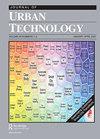土地资源管理的智慧举措:来自中国的观点与实践
IF 4.6
3区 经济学
Q1 URBAN STUDIES
引用次数: 1
摘要
土地资源管理是优化土地利用和促进社会经济发展的关键。在中国,土地资源管理一直面临着土地开发过度需求与保护自然资源和生态环境之间的两难境地。尽管面临挑战,但最近的技术进步为政府官员提供了利用数字和大数据技术更好地管理土地资源的希望。中国政府通过将数字技术与土地资源管理相结合,启动了土地资源管理智能举措(SiLRM)。然而,土地资源管理领域缺乏一个综合的框架来纳入这些技术。本文首先回顾了SiLRM在中国的历史和内容,并提出了三个案例研究,展示了SiLRM目前在中国的实施情况。然后,它为政府官员如何部署先进的It技术制定了一个框架。所提出的框架以及一些政策建议,可以为中国未来综合空间治理体系的发展提供启示,特别是在最近整合多个规划体系的国家改革背景下。拟议的框架也可能对世界其他区域和国家的相关做法产生影响。本文章由计算机程序翻译,如有差异,请以英文原文为准。
Smart Initiatives for Land Resource Management: Perspectives and Practices from China
ABSTRACT Land resource management is critical for optimal land use and improved socioeconomic development. In China, land resource management has always faced a dilemma between the excessive demands of land exploitation and the conservation of natural resources and ecological environments. Despite the challenges, recent technological advancements have offered the promise for government officials to better manage land resources using digital and big data technologies. The Chinese government has embarked on smart initiatives for land resource management (SiLRM) by integrating digital technologies with land resource management. However, the field of land resource management lacks a comprehensive framework for incorporating these technologies. This paper first reviews the history and content of SiLRM in China and presents three case studies that demonstrate how SiLRM are currently implemented in China. It then develops a framework for how government officials should deploy advanced IT technologies. The proposed framework, as well as some policy recommendations, could shed light on the future development of an integrated spatial governance system in China, particularly against the backdrop of a recent national reform that integrates multiple planning systems. The proposed framework may also have implications for related practices in other regions and countries worldwide.
求助全文
通过发布文献求助,成功后即可免费获取论文全文。
去求助
来源期刊

Journal of Urban Technology
URBAN STUDIES-
CiteScore
8.50
自引率
4.20%
发文量
42
期刊介绍:
The Journal of Urban Technology publishes articles that review and analyze developments in urban technologies as well as articles that study the history and the political, economic, environmental, social, esthetic, and ethical effects of those technologies. The goal of the journal is, through education and discussion, to maximize the positive and minimize the adverse effects of technology on cities. The journal"s mission is to open a conversation between specialists and non-specialists (or among practitioners of different specialities) and is designed for both scholars and a general audience whose businesses, occupations, professions, or studies require that they become aware of the effects of new technologies on urban environments.
 求助内容:
求助内容: 应助结果提醒方式:
应助结果提醒方式:


